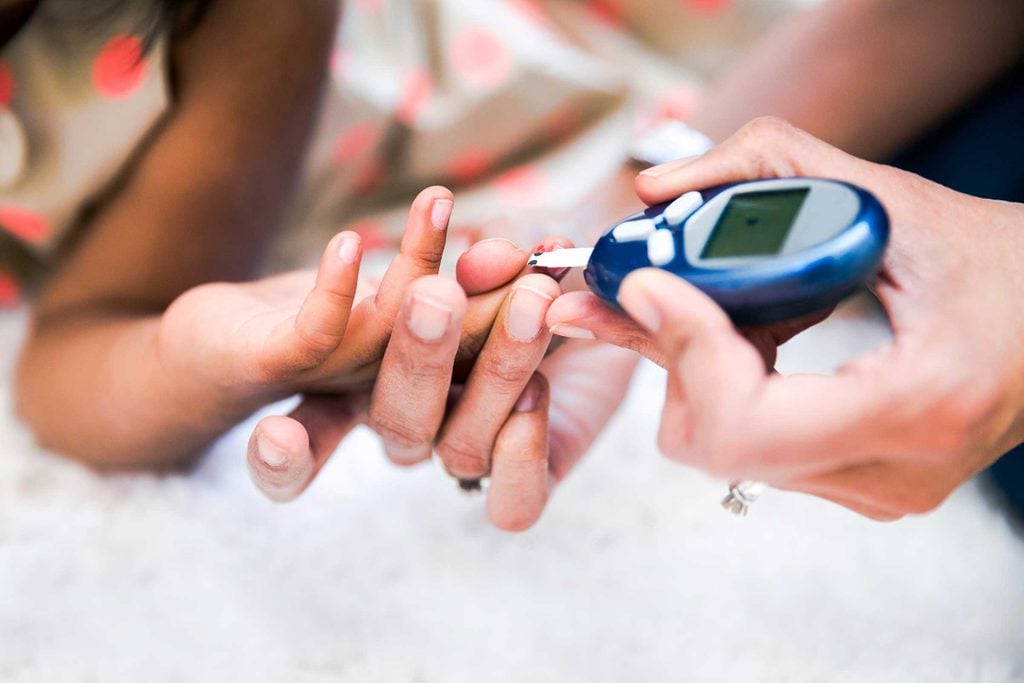What Is Diabetes Mellitus? Key Facts to Know
Updated: Aug. 24, 2020
Receiving a diagnosis of diabetes mellitus can be scary. Although most people have heard of diabetes, many people with a new diagnosis find themselves wondering ‘What is diabetes mellitus?’ Here, the answers you need.

Diabetes mellitus is the formal name for diabetes, and can cover each of the three types of diabetes: type 1, type 2, and gestational diabetes. If you received a diabetes diagno-sis later in life, chances are that your doctor has recognized type 2 diabetes mellitus symptoms, and diagnosed you with type 2 diabetes. Here’s what you should know:
What is diabetes mellitus?
Diabetes mellitus is a chronic, lifelong condition that affects your body’s ability to use the energy found in the food you eat. Your body is meant to break down the sugars and carbohydrates in food into glucose, a special sugar used to fuel the cells in your body. In order to use that fuel, your cells need insulin, a hormone breaks down the glucose and converts it into energy.
People with diabetes mellitus have trouble with insulin: either their body doesn’t make enough, it can’t use insulin properly, or both. Because of this, glucose builds up in the blood.
What is type 2 diabetes mellitus?
Type 2 diabetes is also known as adult-onset diabetes, and accounts for roughly 95 percent of diabetes cases in adults. In type 2 diabetes, the body still produces insulin in the pancreas. However, the body is insulin resistant, meaning that the pancreas has to produce more insulin than normal to keep blood sugars even. (Related: Here are 7 signs you could have insulin resistance.) Insulin resistance is associated with obesity, because fat cells are particularly resistant to insulin.
Type 2 diabetes mellitus symptoms:
Type 2 diabetes symptoms are subtle, so it may take years to detect type 2 diabetes mellitus. Because the body is not processing food correctly, there are a variety of symp-toms that manifest. These include:
- Increased thirst: High sugars pull fluid from your tissues, making your very thirsty.
- Increased hunger: Your body isn’t absorbing energy properly, so you are more hungry.
- Fatigue: Because your cells aren’t getting the energy they need you may become tired.
- Blurred vision: High blood sugar can cause fluid to build up in the lenses of the eyes.
- Being slow to heal from sores or infections: Diabetes affects your body’s responses to ailments.
- Areas of darkened skin: Especially in the armpits and neck, this is a sign of insulin re-sistance.
What are the effects of untreated diabetes mellitus?
Too much glucose in the blood stream can damage your kidneys, heart, eyes and nerv-ous system. Because of this, untreated diabetes mellitus is linked to heart and kidney disease, blindness, and nerve damage, especially in the feet. Type 2 diabetes also in-creases your risk for heart attack and stroke. (Related: Here are 12 silent diabetes complications, and how to treat them.)
How to use diet and exercise to treat type 2 diabetes mellitus
Because diabetes mellitus is related in part by obesity, some of the most effective life-style treatments for diabetes mellitus are healthy eating and exercise. Both of these work to naturally lower blood sugar levels.
People with diabetes mellitus should eat a diet focused on high-fiber, low-fat foods like fruits, vegetables, and whole grains. (Related: These are the best superfoods for diabetics.) These foods have a low glycemic index, meaning that they help stabilize blood sugar. People with diabetes should eat fewer animal products, refined carbohydrates, and sweets, all of which have a higher glycemic index and can spike blood sugar.
Exercise helps lower your blood sugar, so it is particularly important for people with type 2 diabetes mellitus. Ideally, people with diabetes should aim for 30 minutes of exercise five days a week. A combination of cardiovascular exercise (like walking or swimming) with strength exercises (like weightlifting or yoga) is the most effective way to lower your blood sugar. (Related: Here are 10 science-backed reasons to start working out if you have diabetes.)
Medical treatments of type 2 diabetes mellitus
People with type 2 diabetes mellitus need to monitor their blood sugar regularly. How often depends on the individual, but can be as much as multiple times per day. (Related: Here’s a guide to 8 important tests diabetics need.)
In addition to diet and exercise, some people with type 2 diabetes mellitus may need medications or insulin therapy. Medications control diabetes in a variety of ways. One of the most common, metformin, works by helping your body use insulin more effectively. Other types of medication encourage the body to produce more insulin.
A doctor may also recommend insulin therapy, injecting insulin directly into your body. There are many different types of insulin available, and your doctor will work with you to identify an insulin therapy plan that is the best treatment for you diabetes mellitus.
Although receiving a diagnosis of diabetes mellitus can be scary, with careful management and attention to diet and exercise this chronic health condition can be well con-trolled throughout your life.
